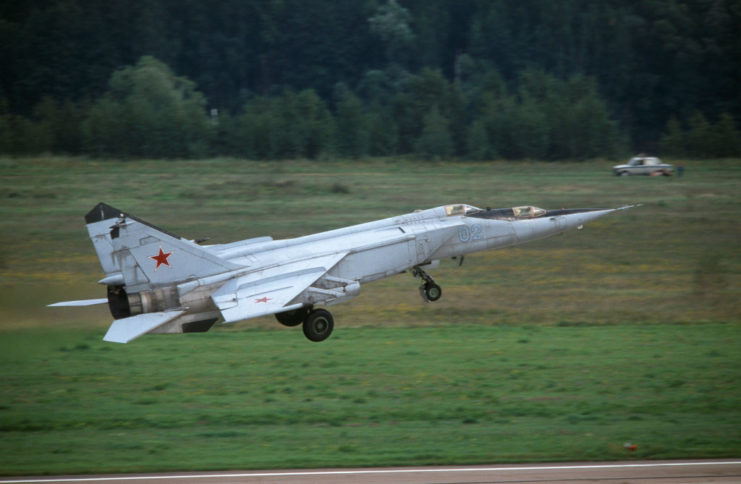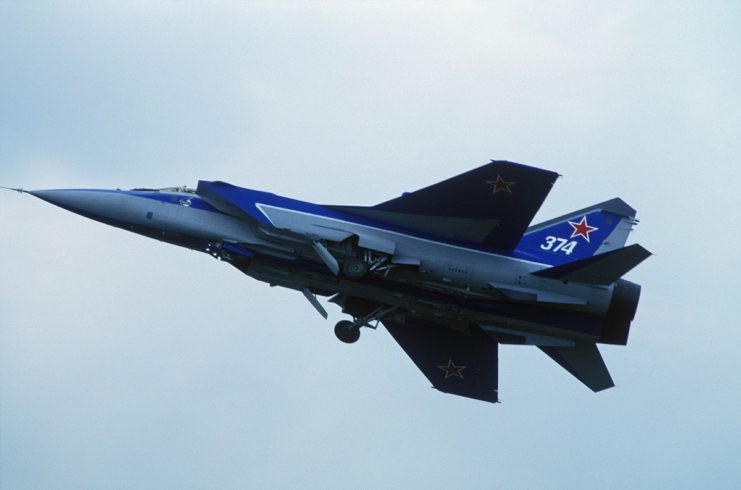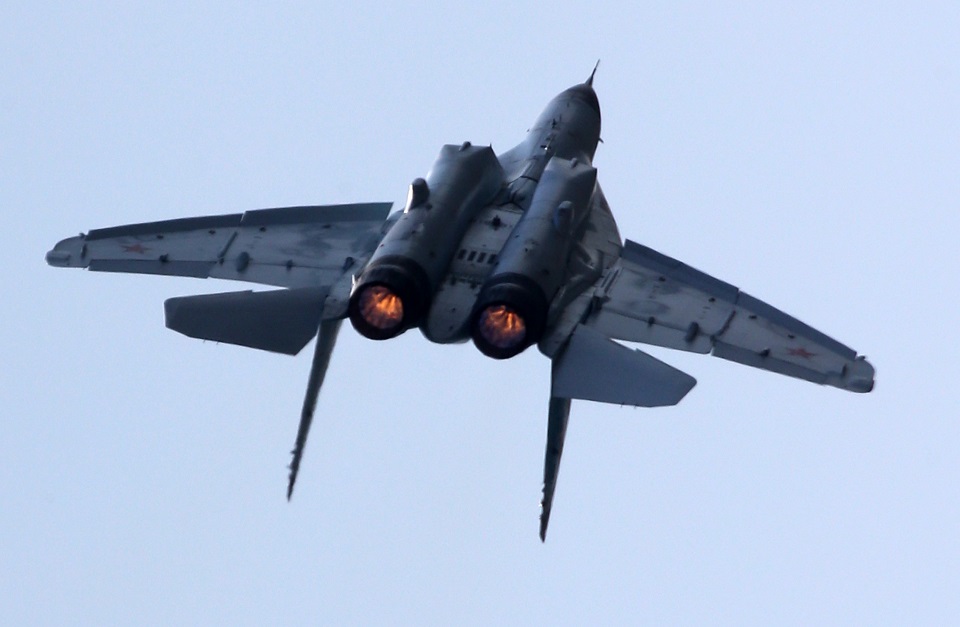Designed as a slightly more refined and civilized version of the MiG-25 Foxbat, the MiG-31 is an aircraft that has remained mysterious to the West even after the collapse of the Soviet Union. The MiG-31, codenamed Foxhound, is a high-speed interceptor aircraft developed by the Soviet Union in the 1970s. Even today it is still in service with the Russian Air Force and remains one of the fastest combat aircraft in the world.
The MiG-31 exchanged the MiG-25’s outright speed for more capable weapons systems, making it an even deadlier platform than its faster sibling. As the MiG-31 has never been exported, it is still an elusive aircraft.
Around 500 MiG-31s were built in total, with around 250 still in the Russian Air Force’s inventory. Operational examples will continue flying past 2030.
Evolution

This is no MiG-31 without the MiG-25. The MiG-25 was an ambitious and probably overreaching project to create an aircraft that could intercept high-flying US bombers. This new aircraft was soon spotted in US spy images, sparking panic among Western aviation industries.
The US thought that its large, highly swept wings indicated an aircraft that was both massive and agile. They were following similar – albeit much less extreme – design elements in their newest aircraft. Soon, they updated the performance requirements for the up-and-coming F-15 Eagle.
For a while, the MiG-25 had an almost mythical reputation, with people in the West assigning all kinds of insane specifications and wild capabilities to it. However, when a Soviet pilot defected to Japan with his MiG-25 in 1976, it all came crashing down. The US was able to analyze the aircraft in great detail and realized they had massively overestimated it. It turned out to be a relatively simple design that relied mostly on raw power. Think of it like the aviation equivalent to a powerful muscle car.
Still, the Soviet Union had made a monster of an aircraft. It was mind-bogglingly fast – able to reach safely reach Mach 2.8 – and had a service ceiling of 80,000 ft. In a testament to the animalistic power this aircraft possessed, it was able to fly at Mach 3.2, but only by destroying itself in the process.
All of this was possible thanks to its heavy stainless steel construction and its two massive Tumansky R-15 afterburning turbojets.
However, for all of its straight-line speed, the MiG-25 was a pig to fly, and the Soviets knew it. After the 1976 defection, the Soviets started selling the MiG-25 to foreign nations and began work on an improved version.
MiG-31

By now the Soviet Union not only had to worry about high flying bombers but low-flying cruise missiles too. As such, the new aircraft would require a newer, much more powerful radar, better engines, and more capable missiles.
The resulting aircraft looked visually similar to the MiG-25 but was named the MiG-31.
One of the biggest changes between the aircraft was the MiG-31’s tremendously powerful Zaslon S-800 Passive Electronically Scanned Array radar, the first of its type to be installed in a fighter. This radar had a 1.1-meter wide antenna and was capable of tracking a target with a radar cross-section of 16 square meters from 125 miles away. Additionally, it had a “look down, shoot down” capability, which allowed it to detect low flying aircraft and cruise missiles.
The Soviets showed off the new radar and the MiG-31 at the 1991 Paris Airshow. The US F-117 Nighthawk was also at the show, and the Soviets suggested that the two aircraft should take to the sky to see if the MiG-31 could detect it. Unsurprisingly the US declined the offer, but Soviet engineers remained confident that they would have detected the stealth aircraft.
The MiG-25 lacked any internal guns for dogfighting. The MiG-31 did, however, with a 23 mm cannon mounted in the starboard wing root.
The MiG-31’s show stopper was its new R-33 missiles. Four of these 4 meter long missiles can be carried by the aircraft, and are its primary armament. Designed to bring down aircraft like the SR-71 and B-52, each of these missiles can strike a target up to 75 miles away. They work in conjunction with the MiG-31’s Zaslon radar, which can guide all four R-33s to four different targets simultaneously.
The half-ton R-33s is the Soviet equivalent of the AIM-54 Phoenix missiles used on the US Navy’s F-14 Tomcats.
As mentioned, the MiG-31 lacks the MiG-25’s extreme straight-line speed, but it still retains most of its high altitude performance – with a top speed of Mach 2.8 (faster than any Western aircraft currently in service) and a service ceiling of more than 80,000 ft. On top of this, the MiG-31 possesses much better low-level performance.
More From Us: The 5 Fastest Military Aircraft That Are Still Flying Today
Neither aircraft are very maneuverable though, which is to be expected from a 50 ton, 75 ft long aircraft. It’s safe to say that it would be annihilated in a dogfight against aircraft like the F-15. However this is a commonly misunderstood aspect of both the MiG-25 and MiG-31: they are interceptors first and foremost, designed to approach a target at immense speeds, destroy them with missiles and break off.
For this job, the MiG-31 is still unsurpassed.
